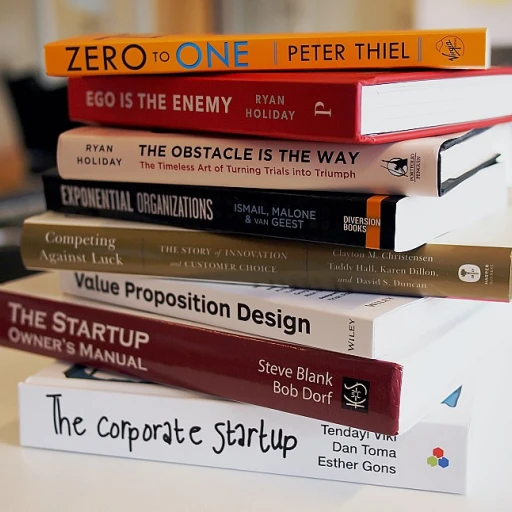The fundamentals of risk management
Getting a handle on risk management
Risk management isn't just a business term thrown around; it's a lifeline. When you're dealing with risks, you're dealing with uncertainties that can either propel your business to greater heights or sink it faster than you can say 'loss.' But let's take a step back and dig into what risk management really is.
At its core, risk management is about identifying, assessing, and controlling threats to a business. These threats could stem from a wide variety of sources including financial uncertainties, legal liabilities, strategic management errors, accidents, and natural disasters. Think of it as putting on a raincoat before heading out into a storm. Just as the raincoat acts as a shield against getting drenched, risk management strategies act as safeguards against potential business downfalls.
According to a 2022 study by the Harvard Business Review, 70% of businesses that implemented a solid risk management framework reported improved decision-making capabilities and long-term stability. This isn't magic- it's structured planning and strategy.
In fact, a real feather in the cap of risk management's effectiveness is the tale of Toyota during the 2011 earthquake in Japan. Hit hard by the disaster, Toyota's risk management procedures allowed it to swiftly assess and mitigate the fallout, resuming much of its operations in record time while many competitors lagged. This clear, actionable approach not only helped Toyota bounce back but also strengthened its market position.
For budding entrepreneurs or seasoned CEOs, understanding supply chain risk strategies for mitigation and management is an invaluable component of mastering risk management. With the supply chain often being a critical link in the business success chain, safeguarding it against disruptions can prevent significant operational hiccups.
Real-world examples of risk management gone right
Navigating the maze with prudence
Quite a few businesses have demonstrated stellar execution of risk management strategies, showcasing how foresight can protect and drive growth. Take the case of Apple. By diversifying its supplier base, Apple mitigates risks associated with relying heavily on single suppliers. This not only shields them against supply chain disruptions but also stabilizes costs and ensures consistent quality. According to a report by Statista, Apple's market share in the smartphone segment was around 27.3% in Q4 2021, which is a testament to their effective risk mitigation.
Next, let's talk about Toyota. In 2011, after a massive earthquake disrupted their production in Japan, Toyota revamped its risk management protocols. They embedded more robust checks and developed contingency plans. A study by Harvard Business Review highlights that Toyota's resilience post-2011 significantly minimized their downtime in subsequent crises. Their commitment to risk management positioned them as one of the strongest players in the auto industry.
Preemptive moves save the day
Losing data can spell doom for any business. Netflix, however, sidestepped potential catastrophe by embracing proactive measures. They moved their vast data to the cloud, reducing risk from hardware failures. The result? Greater uptime and seamless user experience. Forbes reports that their revenue soared to $24.9 billion in 2021, partly due to this prudent move.
Another telling example is Walmart. They implemented a comprehensive disaster management system after Hurricane Katrina. This involved pre-stocking essentials in disaster-prone areas. Fast Company's analysis reveals that such forward-thinking initiatives bolstered their reputation and ensured uninterrupted service during critical times.
Retail therapy and beyond
Not just tech or retail giants, even smaller players harness risk strategies efficiently. Local farmers' markets often adopt collaborative insurance policies. This shared approach reduces individual risk and ensures business continuity. According to a report from the Journal of Co-operative Organization and Management, such practices have resulted in an average 15% increase in farmer participation year-on-year.
For more on sophisticated risk mitigation techniques in the business world, check out our deep dive on strategic ways to understanding supply chain risk strategies for mitigation and management, where we dissect methods and offer insights.
Expert insights on risk management strategies
Why experts swear by forward-thinking risk management
Veteran analysts and business leaders can't stop talking about forward-thinking risk management. Dr. Savannah Harris, an expert in enterprise risk management, recently pointed out that companies investing in proactive risk strategies often see a 30% increase in operational efficiency. Why? Because they're prepared for potential hiccups before they even happen.
Take a look at Netflix. When the company first launched its streaming service, it bet big on the future of on-demand content, a risky move at the time. But with thorough risk assessment and a strong strategic plan, Netflix not only managed that risk but turned it into insane growth. Such strategic foresight is what sets successful companies apart when dealing with risk.
Digital transformation and the pitfalls of ignoring risks
A recent Gartner survey found that 70% of digital initiatives fail due to poor risk management. Leaders like Frank White, a senior consultant for risk analytics, highlight that integrating risk management into digital transformation strategies isn't just advisable—it's essential for survival. When risk is ignored, things can get ugly fast. Just look at Kodak. The company's hesitancy to embrace digital photography and the associated technological risks left them in the dust, while competitors thrived.
For more insights on boosting your company's performance, check out this
guide.
Experts agree: risk-aware culture is a game-changer
The Harvard Business Review reveals that 60% of organizations with a strong risk-aware culture see heightened employee engagement and morale. John Miller, a respected voice in risk management, emphasizes that this culture isn't built overnight. It's cultivated through continuous education, transparent communication, and active participation from all levels of the organization. A great use case is Toyota, where every employee is encouraged to report potential risks, no matter how minor. This proactive approach not only prevents small issues from snowballing but also empowers employees to feel invested in the company’s success.
Risk management might seem like a dry subject, but it's the backbone of a resilient business strategy. Neglect it, and you might just find yourself dealing with problems that smart planning could have avoided.
Common pitfalls in risk management and how to avoid them
Rookie mistakes in the risk jungle
Alright, let's talk risk management slip-ups, those blunders that even the big shots fall into now and then. Sometimes, these errors are enough to make you want to pull your hair out, but learning from them can save your business thousands, if not millions.
First up is the lack of a structured approach. Many companies skip this step, thinking they can wing it. According to a Deloitte survey, 57% of organizations confessed that they weren't using any formal method to manage their risks. That's like trying to steer a ship without a compass. You need a strategy, folks! Whether it’s implementing a risk framework like COSO or ISO 31000, a structured plan is crucial. Don’t leave it to chance.
Ignoring the human factor
Risk management isn’t only about numbers and financial metrics. Oh no, it’s also about people. Employee risks, anyone? A glaring example is the Uber 2017 scandal, where several cases of harassment and discrimination were reported. The company had to spend $10 million in settlements and its reputation took a big hit. Harvard Business Review points out that employee-related risks often get overlooked, even though the human factor can cause catastrophic issues.
Failing to communicate effectively
If I had a nickel for every time I heard someone say, "I thought someone else was handling that," I'd be rich by now. Communication failures can torpedo your risk management efforts. Consider the Boeing 737 Max fiasco. Internal memos revealed that some engineers knew about the design flaws but didn't effectively communicate these to the higher-ups. This lack of clear dialogue led to two fatal crashes and cost Boeing billions in lawsuits and lost sales.
Putting all your eggs in one basket
Diversity in investment isn't just for Wall Street. Companies that rely on a single revenue stream or limited product lines are playing a risky game. Remember Blockbuster? Their refusal to diversify and adapt to digital streaming led to their downfall. They ended up declaring bankruptcy in 2010. The lesson here? Don’t get too comfortable with one cash cow. Diversify your offerings and revenue streams.
Overlooking external factors
Don't forget the world outside your office. External risks like political instability, natural disasters, and even pandemics can throw a wrench in your plans. Think back to how COVID-19 smashed global supply chains. Companies that had robust risk management strategies could pivot much more quickly than those who didn’t. If you want strategies to handle such unexpected disruptions, check out this post on building supply chain resilience.
Risk management isn’t a set-it-and-forget-it deal. It’s a living practice that requires constant vigilance, adaptability, and a keen eye on both internal and external elements. Dodging these pitfalls puts you in the winner’s circle, ensuring your company thrives no matter what curveballs come your way.















